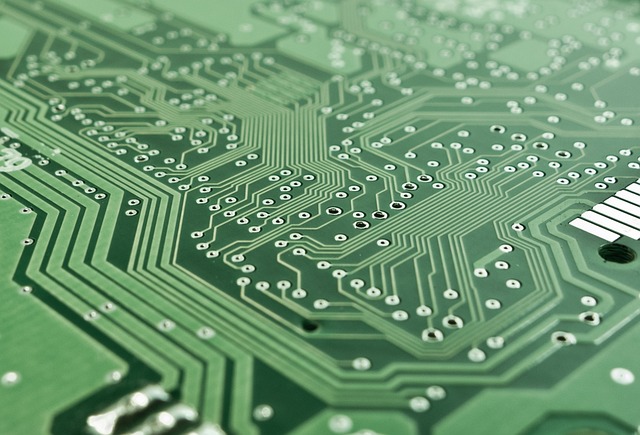Once again, I am overwhelmed by the cool things being developed in Wisconsin. I am not surprised; there are some awesomely talented people in our state. Just a couple of weeks ago while on the road to Madison I met with a client who makes this laser beam thing that blasts atoms off whatever is being sampled or tested. Blast atoms off stuff? You’ve got to be kidding!
The Commerce Department’s Bureau of Industry and Security (BIS) continued efforts to fulfill the mandate of the Commerce Department set forth in section 1758 of the Export Control Reform Act (ECRA), has been tasked with identifying emerging and foundational technologies. This ongoing process has resulted in additional rules for new export control classification numbers (ECCNs) on the Commerce Control List (CCL) that, at minimum, impose licensing requirements for exports subject to the Export Administration Regulations (EAR). These are subject to narrow controls, such as to embargoed countries, supporters of international terrorism, to certain end-users or for certain end-uses.
As a refresher, the general categories are:
- Biotechnology (such as nanobiology, synthetic biology, genomic and genetic engineering, neurotech)
- Artificial intelligence (AI) and machine learning technology
- Position, navigation and timing technology
- Microprocessor technology (such as systems-on-chip, stacked memory on chip)
- Advanced computing technology, such as – memory-centric logic
- Data analytics technology (such as visualization, automated analysis algorithms, context-aware computing)
- Quantum information and sensing technology (such as quantum computing, quantum encryption, quantum sensing)
- Logistics technology (such as mobile electric power, modeling and simulation, total asset visibility, distribution-based logistics systems)
- Additive manufacturing (e.g. 3D printing)
- Robotics (such as micro-drone and micro-robotic systems, swarming technology, self-assembling robots, molecular robotics, robot compilers, smart dust)
- Brain-computer interfaces (such as neural-controlled interfaces, mind-machine interfaces, direct neural interfaces, brain-machine interfaces)
- Hypersonics (such as flight control algorithms, propulsion technologies, thermal protection systems)
- Specialized materials (for structures, sensors, etc.)
- Advanced materials (such as adaptive camouflage, functional textiles (e.g., advanced fiber and fabric technology), biomaterials)
- Advanced surveillance technologies, such as – faceprint and voiceprint technologies
As you can imagine, looming large over the emerging and foundational technologies conversation is the specter of China and its push for independence in the field of advanced technologies, exemplified by its state-led industrial policies, collectively dubbed “Made in China 2025,” aimed at global dominance of the high-tech manufacturing sector.
The Foreign Investment Risk Review Modernization Act of 2018 (“FIRRMA”) was also enacted as part of the 2019 National Defense Authorization Ace. The FIRRMA strengthened and modernized the process by which the Committee on Foreign Investment in the United States (“CFIUS”) reviews certain transactions involving foreign investment in the United States and certain real estate transactions by foreign persons to determine the effect of such transactions on U.S. national security.
Importantly, FIRRMA references Section 1758 of ECRA for purposes of defining “critical technologies” subject to CFIUS’s mandatory notification requirement. BIS’s decision to forego the distinction between “emerging” and “foundational” technologies does not change the interaction between ECRA and FIRRMA. However, companies dealing with “Section 1758 technologies” should be aware of their potential obligations under FIRRMA and related CFIUS regulations pertaining to “critical technologies”
Critical and Emerging Tech (CET) List–
Distinct from BIS’s ongoing efforts to identify “emerging and foundational technologies”, in February 2022, the interagency National Science and Technology Council (“NSTC”) Subcommittee on Critical and Emerging Technologies published its updated Critical and Emerging Technologies (“CET”) List. The CET List will “inform forthcoming strategy on U.S. technological competitiveness and national security.”
Though the CET List is separate from the running list of “emerging and foundational technologies” mandated by ECRA, the lists have many technologies in common, such as biotechnology, AI, and hypersonics. Some notable technologies present in the CET List but missing from BIS’s list above include advanced gas turbine engine technologies, financial technologies (“fintech”) and advanced nuclear energy technologies.
Only time will tell whether BIS’s new approach to identifying “Section 1758 technologies” will enable quicker and more comprehensive identification of emerging and foundational technologies essential to U.S. national security. In the meantime, companies dealing with cutting-edge technologies of strategic importance to the U.S. should stay tuned for the latest developments in this rapidly evolving area of law.
***If you have questions concerning BIS’s identification and control of “emerging and foundational technologies” pursuant to Section 1758 of ECRA or your company deals with any of the technologies discussed above, feel free to contact the SBDC’s Go Global Specialist: .
